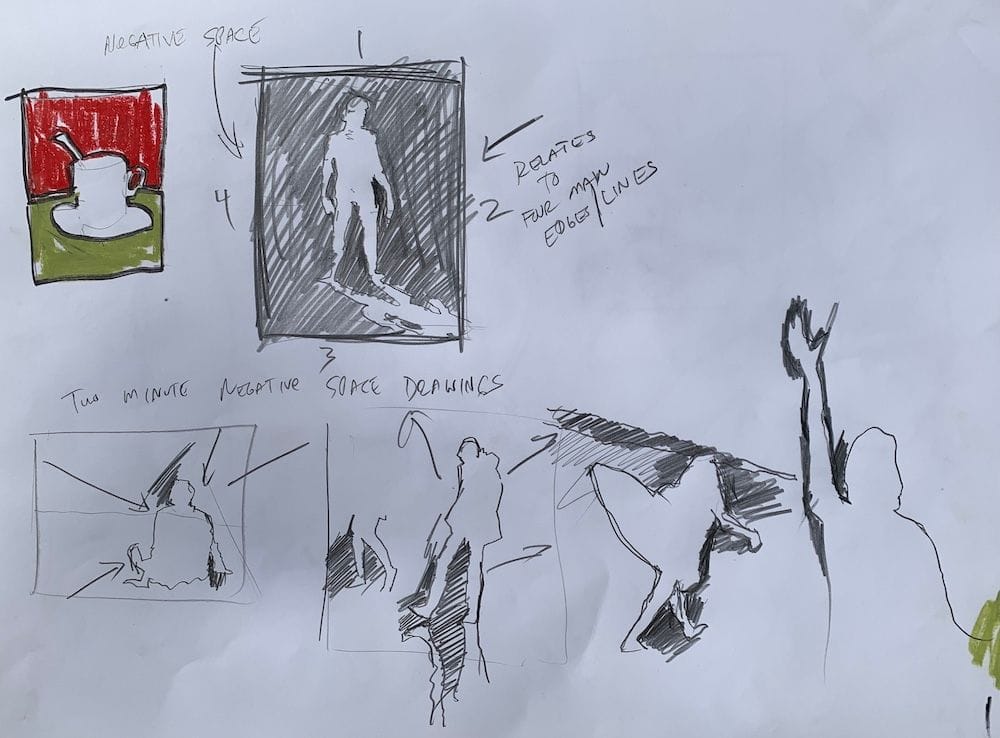Negative Space Drawing Techniques
Negative space drawing is like pulling weeds — not glamorous, but essential. In this beginner guide, learn simple exercises that clear away clutter, sharpen observation, and keep your drawing skills fresh.

Negative space drawing is one of the best beginner exercises to improve your art. Think of it like pulling weeds. If you don’t maintain your flower beds, weeds creep in and cover the blooms. In drawing, the “weeds” show up as stiff lines, poor proportions, or symbol-like shortcuts. To keep your skills fresh and sharp, you have to tend them regularly.
More drawing lessons? Visit the Free Drawing Tutorials & Courses hub →
That’s where drawing exercises come in. Contour, semi-blind contour, upside-down drawing, and especially negative space drawing — these drills are like grabbing a spade and clearing the bed. They might not look glamorous, but they keep your fundamentals solid and your creativity free to grow.

Motivational Reminder
Like pulling weeds, it’s never really “done.” Negative space drawing may feel odd at first, but every time you practice, you clear away the clutter. With consistent effort, your drawings become clearer, stronger, and more expressive.




